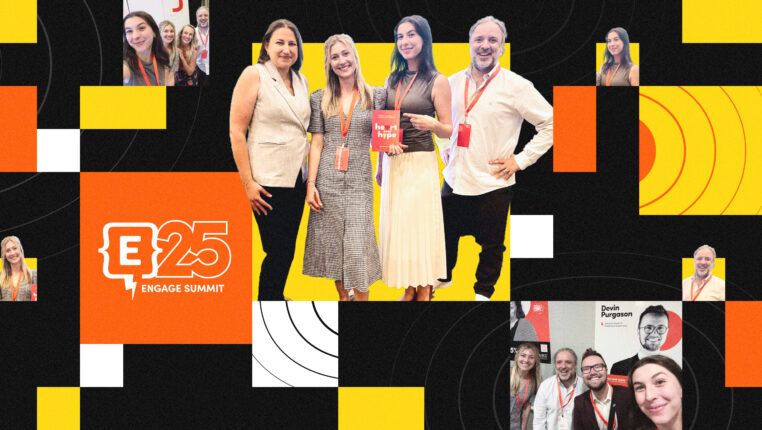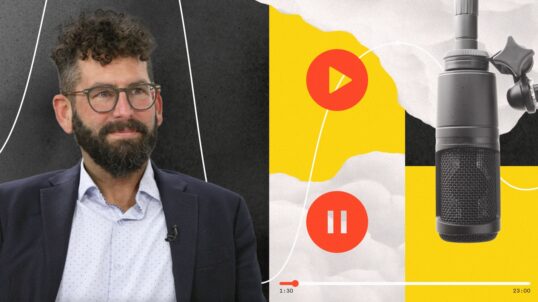If you work in marketing for a higher education institution, you’ve probably heard of the terms inbound marketing, and relatedly, content marketing, over the past few years. That’s because interest in, and information about, the two strategies has exploded over the past five years.
 But while it’s easy to adapt these marketing principles and tactics for B2B and B2C organizations, it takes special thought and consideration to adapt inbound marketing aspects like buyer personas, premium content, and the buyer’s journey to the world of higher education. That’s because picking a college or university is a unique purchasing decision. If you buy a pair of sneakers that you fall out of love with, you can return those sneakers, or simply buy a different pair. Even on larger purchases, like the purchase of a vehicle, there are avenues for returning or trading in that car or truck if you decide it no longer suits your needs.
But while it’s easy to adapt these marketing principles and tactics for B2B and B2C organizations, it takes special thought and consideration to adapt inbound marketing aspects like buyer personas, premium content, and the buyer’s journey to the world of higher education. That’s because picking a college or university is a unique purchasing decision. If you buy a pair of sneakers that you fall out of love with, you can return those sneakers, or simply buy a different pair. Even on larger purchases, like the purchase of a vehicle, there are avenues for returning or trading in that car or truck if you decide it no longer suits your needs.
Picking a post-secondary education is different. Sure, you can transfer if you really dislike your original choice, but transferring isn’t easy; doing so might impact a student’s tuition payments, scholarships, housing logistics, and academic credit, among other important considerations.
Picking a college or university is also an incredibly emotional decision; one that plays a role in how we identify ourselves moving forward. Have you come across a professional biography or obituary that read, “A lifetime fan of Nike sneakers”? Of course not. But how often have you read a line like, “A graduate of State University in 2007”?
That’s why it’s crucial that students pick the right college the first time around. And when you’re making such an important decision, you research it. A lot. In 2011, the average consumer researched nearly 11 different sources before making a purchasing decision. And that statistic was for consumer purchases five years ago. How many sources do you think students are using to pick a college today? 20? 30? 50+?
But what does any of this have to do with inbound marketing and the buyer’s journey? Well, as students research their higher education options, the questions they ask, their pain points, and their content needs change. In inbound marketing, this process is called the buyer’s journey, and it’s a key component of inbound marketing along with buyer personas. In higher education, we call this journey the applicant’s journey. Together with student personas, the applicant’s journey can help higher education institutions map the content they are producing to the needs of their prospective students.
Understanding the Applicant’s Journey
There are three stages of the applicant’s journey:
- The awareness stage, where prospective students are asking questions about what they are looking for in a college or university;
- The consideration stage, where students identify the aspects of a college that they are interested in and submit their applications; and
- The decision stage, where students compare and contrast their college acceptance letters and options and ultimately choose where to enroll.
The rest of this blog post is dedicated to each stage of the applicant’s journey, what a prospective student may be looking for in that stage, and what types of content higher education institutions can produce to meet those needs.
Awareness Stage
The awareness stage kicks off a student’s research journey to finding the right college or university. In this phase, they are asking questions that are broad in scope and are strictly looking for educational, valuable content in return. Put another way, this is not the time to tout your US News rankings or share an offer about the application fee you’re waiving.
Let’s come up with a sample student to demonstrate how the applicant’s journey in higher education plays out. Let’s call her Sally State. In the awareness stage, Sally may have decided that she’s going to attend college, but not much else. She may be trying to decide if she wants to attend a large public university or a smaller private university, what she wants to major in, whether to stay close to home or attend a college out-of-state, or all of the above.
In this instance, Sally may search the internet for topics like, “what’s the difference between attending a public or private college?”, “is it hard to go to college out of state?”, or “how do I pick a college major?”
Awareness stage content needs to be educational, rather than promotional, and honest. Additionally, this content should be easy to find and consume. A good place to start is with your blog. Publish articles that demonstrate that you understand your prospective students’ questions and inquiries, and use those article to offer unbiased answers. If you’re struggling to think of what to write in the awareness stage, consider the keywords your prospective students are using to land on your website or questions you’re frequently asked at college fairs, and talk with your current students about the questions they asked when starting their college search.
 In the awareness stage, your main goal is to attract prospective students to your school and then nurture those student through the admissions process, from someone who discovered you through a search engine or social post to someone who wants to enroll in your college or university. To do so, you’ll need to collect their information, and in particular, their email address.
In the awareness stage, your main goal is to attract prospective students to your school and then nurture those student through the admissions process, from someone who discovered you through a search engine or social post to someone who wants to enroll in your college or university. To do so, you’ll need to collect their information, and in particular, their email address.
How do you obtain that information? In addition to blog posts, you’ll want to publish premium content that explores the topics you’re sharing on your blog in more detail. If we return to Sally State, a useful blog post might be “5 In-Demand College Majors.” And on that blog post, we might include a call-to-action that links to a more in-depth piece of premium content titled, “Your Comprehensive Guide to Choosing a College Major.”
In exchange for that in-depth piece of premium content, prospective students will need to complete a form on a landing page. Then, with that information in hand, schools can continue to reach out to interested students with relevant information to nurture them through the admissions process, providing more personalized content to them as you learn what resonates with them and what doesn’t.
Consideration Stage
In the consideration stage, students have answered their first round of questions and are now beginning to look into schools that fit their desired criteria. For example, let’s say that after researching in the awareness stage, Sally State has decided that she wants to attend a large, public university at least two hours from home where she can major in either communications, business, or marketing.
You can see now how Sally’s research might be different in this stage of her research than in the awareness stage. In the consideration stage, Sally can focus on seeking solutions, rather than just answering questions. For example, Sally may now search for, “best schools for studying communications” or “best public universities near Chicago.” Through her research, she’ll compile a list of schools she’s particularly interested in and prepare her application.
In this phase, schools can begin to get more specific about what programs and opportunities they offer, but this information still needs to be educational in nature. Students in the consideration stage are still evaluating a number of options, and they may not have interacted with your school at length yet, so content that’s overly promotional could be a turn off.
RELATED: Melissa Bischoff explains the value of creating student personas in higher education.
So what should you write about, and in what form should that content come in? In the consideration stage, consider blog posts, infographics, ebooks, videos, and white papers about the majors your school offers and the success stories of students within that major. Share the cultural and career benefits of your school’s location. Shed some light on a unique aspect of your university’s application process, if there is one, or if not, communicate what your admissions staff looks for in applications and demonstrate how applicants can separate themselves on their applications.
When crafting this content, consider your student personas, and what your ideal student’s needs are. For example, if you are a school that wants to attract first-generation college students, you might find that a guide to writing better college essays or navigating the financial aid process is especially valuable.
Decision Stage
Ok, we’re in the homestretch. In the decision stage, students have applied to the schools they hope to attend and are now weighing their options. This is the time to get emotional, get personal, and differentiate yourself from your competition.
Your students are likely weighing a variety of factors in making their decision, from campus community to affordability to career prospects. With different students prioritizing different factors, it can seem daunting to send the right message to the right student, but by analyzing your student personas and the data about what content your admitted students have already interacted with throughout the applicant’s journey, you can learn what content will resonate with your admitted students.
The decision stage is the time to focus on storytelling and connecting your admitted students with the current students, faculty, and alumni in your community. Whatever marketing tactic you choose in this stage, remember that emotions play an enormous role in any decision-making process, so your content needs to elicit a reaction.
So wow admitted students with a virtual reality campus tour. Elicit a sense of belonging through Twitter chats and webinars. Strive to create excitement by streaming an event live on Facebook, and foster a sense of community by having your students and alumni takeover your Instagram and Snapchat accounts for a day. Inspire your admitted students by sharing your most influential student stories on your blog. Give away campus swag and then share the pride of enrolling students through user generated content. Social proof can be highly influential when making a decision, and students – all consumers really – naturally gravitate and relate to others who resemble themselves.
The Takeaway
Choosing an educational institution is a major decision for a prospective student, whether that student is choosing a private high school, undergraduate institution, or considering going back to school to earn a graduate degree. As a result, prospective students are spending an incredible amount of time and energy researching their options, and online in particular.
For schools and colleges then, the goal is to provide the right content to the right student at the right time. Understanding the applicant’s journey in higher education, especially when used in collaborate with student personas, can help institutions understand the timelines, priorities, and pain points of their respective prospectives (say that five times fast). Done right, schools can attract the right prospective students in the awareness stage of their research and nurture them through the conversion process until they’ve become loud and proud enrolled students.




